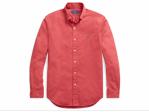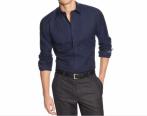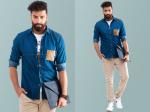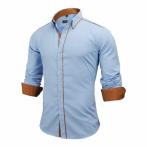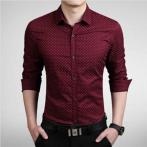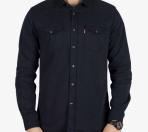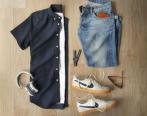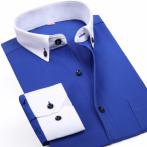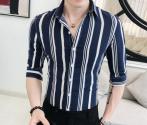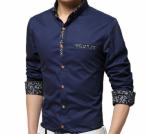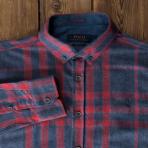A Man’s Guide to twills slim fit shirt
what you will read...
What Is Texture? Texture Fundamentals Why Texture Matters Texture and Color Texture and Pattern Working Texture Into Your Wardrobe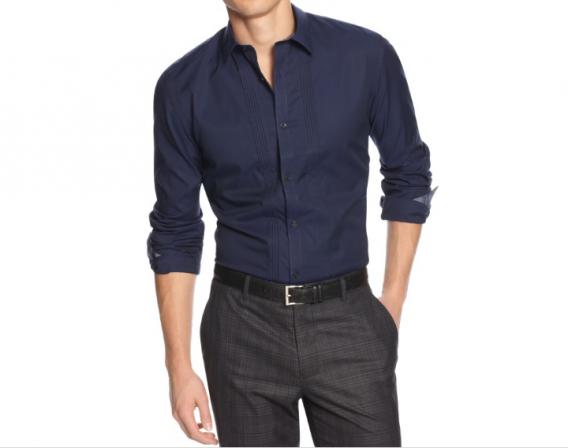
This is an article about twills slim fit shirt. Simply referred to the surface of any texture object, the texture is directly related to the sense of touch. Of course, this definition is a bit different in the visual arts, as we may reach textures that are not fundamentally tactile.

What Is Texture?
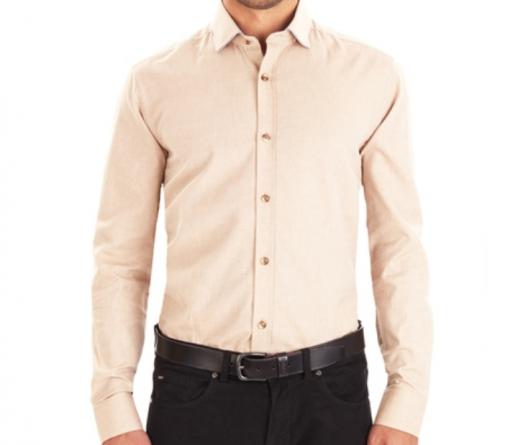 Texture is another element of the visual arts that is usually associated only with the sense of touch, while its importance is more in relation to the particular force and the acquired ability of the visual power gained through experience.
Texture is another element of the visual arts that is usually associated only with the sense of touch, while its importance is more in relation to the particular force and the acquired ability of the visual power gained through experience.
If it is experienced and recognized through both senses, both tactile and visual, it will understand a wider range of concepts. Soft, rough, shiny and opaque materials, such as wood, glass, cotton, stone, paper, etc. What we understand from childhood through tactile sense gives us a mental history of various tissues, so that when we look at the texture we immediately sense its roughness and softness, an element that can be used in a composition to have unparalleled effects. Have a view of the audience.
How the surface treatment of three-dimensional phenomena is obtained by a sense of touch. The tactile texture depends on the internal structure of the objects and how they are created. The tactile sense determines the difference between the texture of the sanding paper and the surface of the glass by touching them; although visually the difference between the two textures is also recognizable because previous experience with the tactile sense allows us to distinguish between textures. To clean each other. Some textures are only understood by seeing, like the sky textures in astronomical photography, sometimes textures are added to the image to create a particular meaning, especially in the photomontage genre.
Texture Fundamentals
Texture Fundamentals created by shapes and colors and objects around us can easily and irregularly pattern the texture in the photo. Proper and effective use of texture strengthens the image; the value of expensive lenses is due to the transparency and detail of the subject’s texture. Textures are everywhere around us, in natural and artificial environments. A photographer must first find the texture and then use it to improve his work. With the advent of macrophotography (especially aerial photography) and microfotography (particle photography) a new view of the tissues found in nature was not available to humans before. The tissues are indefinitely present around us. What texture and composition is used depends on the photographer’s creativity and vision. For example, a texture can be a strong structure, a well-defined background, a dramatic repetition of elements, or a color that enlivens the image. Using texture enhances the value of the image.
The texture is seen in nature irregularly, unlike the regular synthetic textures, the photographer uses them according to the concept needed in his photograph; the photographer can create the texture with a set of self-elements, with a photographic look and at different angles. . This creative aspect has made photography of irregular textures much more difficult than regular textures, but it gives the photographer the freedom to create the textures he wants from whatever he sees.
Why Texture Matters
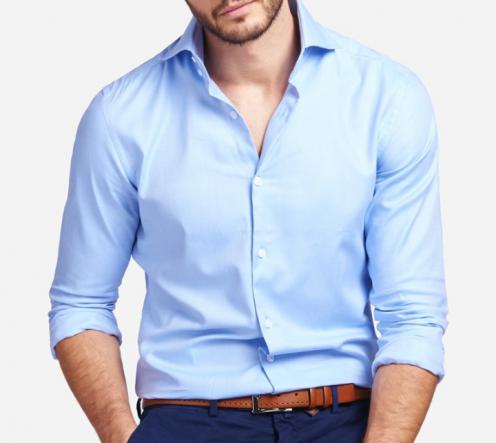 In nature there is an endless range of textures. The simple layout of rocks, tree lines or veins can be photographed on both large and small scale and macro. Often the natural elements in the elements create attractive textures. Artificial textures, especially in architectural photography, are widely found, both in the photography of various parts, such as a series of regular structures, and in the form of a bird’s eye view, and in urban photography. The texture element, if used correctly in the composition, creates a high-quality effect, whether synthetic or regular or natural, and the use of contrasting textures can help to make the effect attractive.
In nature there is an endless range of textures. The simple layout of rocks, tree lines or veins can be photographed on both large and small scale and macro. Often the natural elements in the elements create attractive textures. Artificial textures, especially in architectural photography, are widely found, both in the photography of various parts, such as a series of regular structures, and in the form of a bird’s eye view, and in urban photography. The texture element, if used correctly in the composition, creates a high-quality effect, whether synthetic or regular or natural, and the use of contrasting textures can help to make the effect attractive.
The following techniques for fabrication on the cardboard surface are as follows:
- Alcohol Technique
- Texture with Nylon Freezer Bag
- Creating texture by scratch
- Create texture with sponge
Texture and light are two indivisible elements, as the position of the light is proportional to the position of the surface, that is, how the light is transmitted to the target texture, it is better to use light on one side rather than light to shoot rough textures. And the texture shadows better, no matter whether you are in the studio or in nature, the light reflects the rough texture. If you need to take a lighter texture or if you have a subject you need to control the rough texture, use direct light to flatten the texture and make it look softer. The best practice to understand this is to wear knitwear with both direct and sideways lighting.
It is very important to get a good textured image with accurate focusing, the best option is to use the camera’s autofocus unless it is possible, so if your photo is just for texture, you should use the proper distance to capture the detail. Capture the detail in a closer view, as well as the appropriate size in the box, to get more editing information.
To achieve a one-handed texture, it is best to use a 90-degree angle so that the texture does not distort and does not require editing in the software. The most difficult levels for photography are those that reflect. Polarizing filters are required to remove reflections for glossy textures. The depth of field is not used for shooting textures until the whole texture is in full focus, it is advisable to use a low ISO so that the noise does not damage the texture.
Texture and Color
For the Impressionist painters, the visual quality of the color texture created by brush strokes on the canvas was of particular value. Among the painters of this style are Paul Cézanne, Vincent Wangog. Neo-Impressionism painters such as Paul Ciniac and Georgesaura also created colored textures together to create colorful textures, in addition to visual aspects of color combinations, to obtain a particular visual quality in texture.
The most significant change in texture is when Georges Brock and Pablo Picasso first used new objects in their painting, in addition to the conventional color materials, such as newspaper surfaces and grains, because the appearance of the rough textures and Harsh, glossy, polished, soft and delicate each have their own visual qualities.
These textures are created in a variety of experimental ways to produce pure visual effects, without the purpose of creating them to simulate the appearance of objects in nature. Much of the visual impact on abstract painters, volumetric works and contemporary graphic works is due to the use of drawing textures that are invented in various ways by artists using different materials.
Drawing textures are created by compressing and repeating lines in different combinations, or by using dark-colored, light-colored spots, or by applying different materials and tools. Different types of drawing textures are created by dots, printed trays, regular and irregular lines, stains and effects of tools and materials, and in different ways. Examples of different textures are present and available, as well as in image processing computer applications for use by architects, designers and graphic designers.
In the art of photography, with the advent of macrophotography (especially aerial photography) and microfotography (particle photography), new insights into the textures of the work were not previously available to humans.
Texture and Pattern
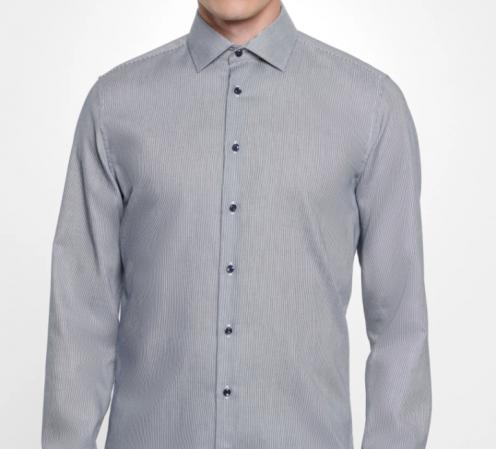 In a combination of contexts, it is necessary to establish a visual connection between the elements and the meaning of the shapes. It is impossible to unify the visual elements without a background that can be conceived as a frame or overall space of the work. Without the background there will be no shape and no positive and negative atmosphere. Therefore, in the context of staffing, it is also necessary. The composition of the visual elements is related to the frame.
In a combination of contexts, it is necessary to establish a visual connection between the elements and the meaning of the shapes. It is impossible to unify the visual elements without a background that can be conceived as a frame or overall space of the work. Without the background there will be no shape and no positive and negative atmosphere. Therefore, in the context of staffing, it is also necessary. The composition of the visual elements is related to the frame.
In addition to the frame in which the basic structure is formed, the following three factors are required to create a successful visual combination:
- Visual balance
- There is proportionality and harmony between the different elements of a compound
- The existence of a harmonious relationship between the components and the whole and the subject matter of the work
Types of compounds can be generally classified into two types of symmetrical and non-symmetrical. In modern sculpture, the texture function is important in the creation of works of art, especially when used in contrasting volumetric combinations to create new visual effects and deeper artistic concepts. Volumetric effects created by matte and rough surfaces along with polished surfaces all create special visual effects for the eye.
Production and use of carpets, carpets and carpets, flat and high relief wallpapers, types of exterior coatings such as lattice, cement, concrete, metal, tile and mosaic due to the visual texture of materials and materials. .
Working Texture Into Your Wardrobe
We all buy clothes that we can wear for a long time! Especially if this dress is a textured or expensive pleated or high quality pleather, you probably have the idea that you can have it in your wardrobe for a few years, but when it loses its shape after a few months, it wears off. Its texture is damaged or even stuffed with the hair of your pet thinking that you may have made the wrong choice.
But before you put your favorite sweater and texture aside and stop using it, let’s take a look at some of the most important maintenance and care tips as well as revitalizing your knitwear. Of course, don’t forget that each knitwear or sweater and jacket may have its own wash and wash method, so be sure to keep a label on the clothing that is sewn to the collar post or seam. Applied Maintenance Procedures for Varieties of Textures, Pullovers and Jacket. The first and most important thing is to never hang on knitwear.
Most tissues need to be folded to avoid problems such as pulling the fabric and tearing the clothes off the shoulders. The second important point about all types of knitwear is to always wash your knitwear by hand gently and in cold water. Fortunately, wool knitwear does not require much washing. Instead of washing your wool, allow it to soak for a few minutes after wearing it every time. Wool fibers are antimicrobial and have an unpleasant odor reducer, so they are more efficient than water washing to eliminate body odor. If you wear a woolen underwear or any other woolen knitwear you wear, a skirt or a T-shirt or poplin shirt,cotton fabric thickness twill white dress shirt, top will prevent you from wearing more clothes.
Although the labels may suggest that you woolen tissue, the materials used in the laundry may damage the clothing texture, so we suggest that you wash your woolen clothes by hand. To wash the texture cloth, put it in a little warm water and gently wash with a wool detergent and then rinse with cold water. Do not hang it to dry, but wrap it in a dry towel to get moisture.
The method of keeping cashmere clothes is exactly the same as wool. Do not overheat them and place them in the freezer for half an hour, use a shirt underneath and wash them in exactly the same way as wool. Cashmere No softener is needed during the wash because the cashmere fabrics themselves become softer over time.
Washing cotton knitwear is the easiest thing. The important thing is to wash your laundry with your own matching clothes to wash with a washing machine. Be sure to throw the laundry back and forth in the washing machine, avoid cold heat, use a mild detergent to rinse, and then dry the laundry for 10 minutes in the dryer to prevent wrinkling, then wrap it in a towel. Flatten the surface to completely remove moisture.
Synthetic fibers include polyester, acrylic, nylon or any other abnormal fibers. The safest way to wash your knitwear with synthetic fibers is to wash them by hand. Be sure to put the clothing back on and wash it off with lukewarm water and mild detergents and then rinse with cool water. Note that synthetic fibers are heat resistant like plastic and are not heat resistant, so naturally they should not be washed or ironed with hot water.

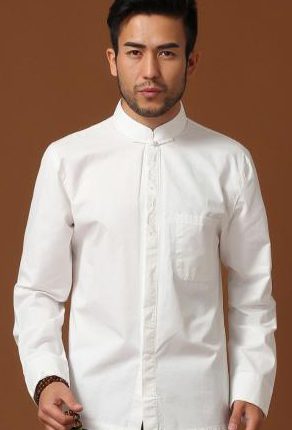 Majid GHeytany
Majid GHeytany 